Before hitting the road with your caravan in tow it’s important to check a number of things to prevent things like snaking, detachments, tyre blowouts, and general towing instability.
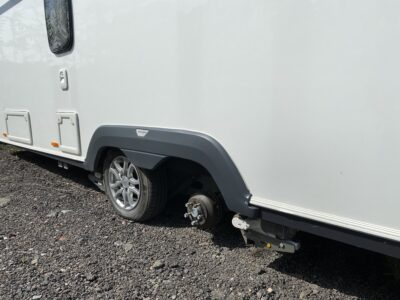
Poor loading, incorrect hitching up and other important pre-towing checks could cause a road accident and serious damage to your caravan.
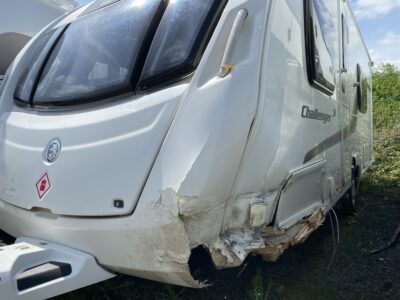
In this video, we visit Pulse Recovery Services, one of the specialist recovery and repair agents used by Caravan Guard and our underwriter RSA.
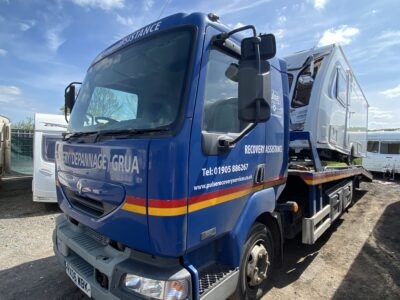
Alan from Pulse Recovery explains the importance of thoroughly checking your caravan before towing to avoid an accident and a costly insurance claim – which might mean your caravan is out of action for a little while.
Top towing checks
Alan highlights the things to check before towing a caravan. His first top tip is:
1. Understanding caravan weights
It’s important to know the Mass in Running Order (MIRO) of your caravan – which is the weight of your caravan as it left the factory and the MTPLM (Maximum Technically Permissible Laden Weight) which is the maximum permissible weight when it’s fully loaded.
The difference between these two weights is your payload, which is the weight of all the things you can carry in your caravan whilst towing, from clothing and food to gas bottles and awnings. Plus, accessories that might have been added later, such as a solar panel or motor mover.
It’s also recommended that the MTPLM of your caravan should not exceed 85% of your car’s kerb weight.
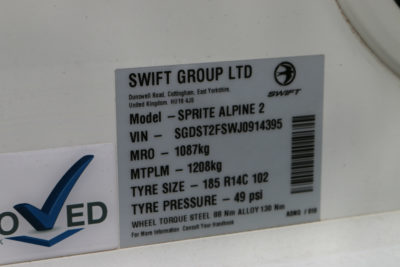
These weights are normally shown on the weight plates of your caravan, which are often near the door.
Going over the MTPLM can lead to towing instability so it’s important to know how much weight you’re carrying before loading your caravan.
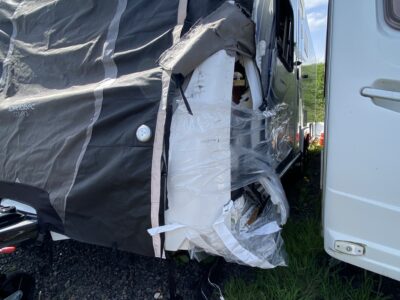
2. Loading your caravan correctly
The basic rule of thumb for safe towing is to load heavy items low down and over the caravan’s axle. Lighter items can be stored higher up and at the back of the caravan.
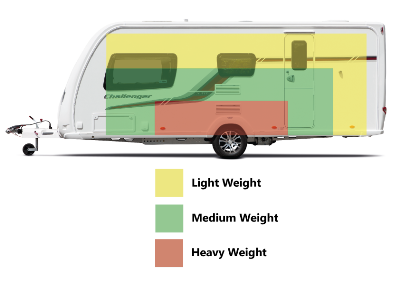
Alan warned owners with rear island beds not to be tempted to store lots of heavy items underneath them and to store things like tins and pans down low in case they move about when travelling and fall onto the worktop.
Tempting as it might be to do the family shop before your holiday, consider the extra weight and room this will take up. It’s far better to shop locally when you reach your destination.
3. Check your caravan noseweight
Having the correct noseweight is vital to towing stability. Too light, and the outfit becomes unstable because the caravan will tend to lift the rear of the towcar; too heavy and the load on the towball will cause the front of the vehicle to lift so affecting the steering.
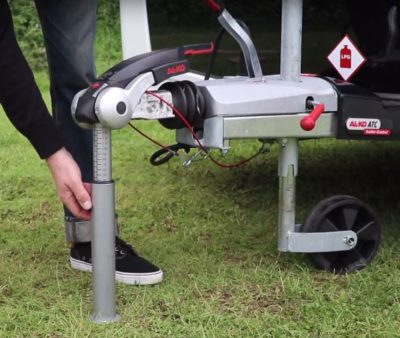
The ideal noseweight of a loaded caravan should be between five and seven percent of the loaded mass. See our video on how to measure and adjust your caravan noseweight.
4. Hitching up carefully
When connecting your caravan to your tow vehicle this needs to be done carefully.
Alan said last year at Pulse Recovery they recovered 72 caravans that had not been hitched up correctly.
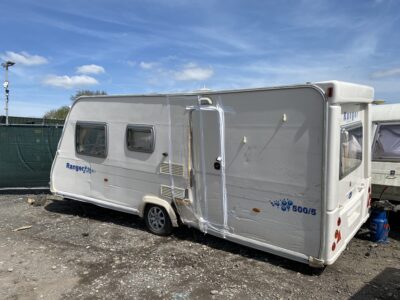
Here he explains the steps to take:
First, reverse the car in line with the caravan hitch; then attach the breakaway cable to the tow vehicle; put the caravan and car handbrake on, and lower the hitch of the caravan onto the car, observing the hitch indicator. It’s worth doing a further check here to make sure the caravan is securely attached by lifting up the stabiliser handle and winding down the jockey wheel. This should lift up the caravan and the rear of the tow car.
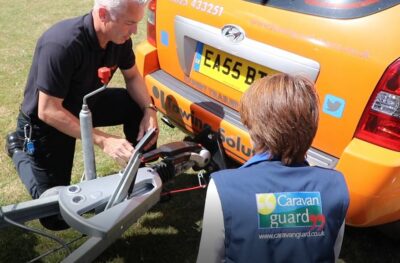
Once you’re happy that it’s secure, lower the stabiliser handle, wind and store the jockey wheel away and connect the electrics to the tow car.
Then do a walkaround check of the caravan to make sure all lockers, doors, windows and skylights are secure, and to make sure that all lights are working on both the caravan and the tow vehicle.
See our guide to hitching up video.
5. Check your caravan tyres
It’s also really important to check your caravan’s tyres and wheels to help prevent a wheel detachment or tyre blowout.
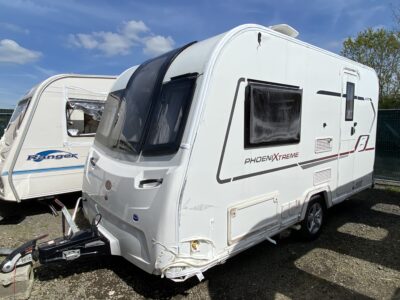
Always check the pressure of the tyres as well as their condition and age. If there’s any sign of damage, such as splits or cracks, or the tyres are more than five to seven years old, then they should be replaced.
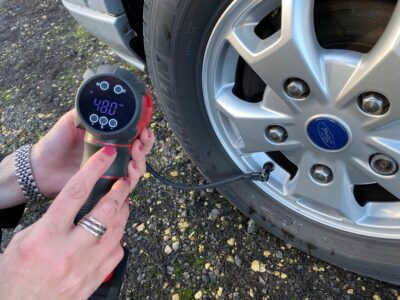
Finally, check that all the wheels are torqued to their correct setting, particularly if you’ve recently had a service or repair.
See our tyre safety pact video.
6. Towing and driving carefully
Now your caravan is correctly loaded, hitched up and the tyres are roadworthy, it’s time to hit the road with your towing mirrors in place.
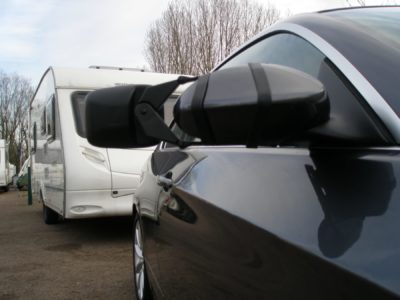
Alan warned caravanners to observe the speed limits and the road conditions and to drive accordingly, taking special care when overtaking high-sided vehicles.
“Take regular breaks – there’s no hurry,” said Alan. “We want you to get on your holidays safely.”
Over to you…
Do you have any pre-towing checks to share with fellow caravanners? Simply comment in the box below.
And if you have an accident or suffer any damage to your caravan then make sure any temporary repairs that you might make keep the area watertight, so it doesn’t lead to more damage further down the line.
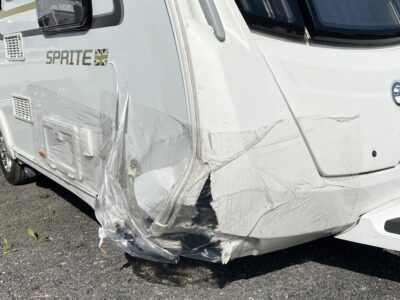
For more information about our specialist caravan insurance cover visit www.caravanguard.co.uk


Before setting off, my wife always says :- ‘Steady jockey steps on the brakes.’
Meaning Steadies up, Jockey wheel up, Steps inside, Handbrake off. All of which I have missed at sometime in the past.
Good advice and if I may add, don’t rush it. It’s not a race. You will probably have an audience when hitching up to leave a caravan park so don’t get flustered, don’t shout at the wife, keep a cool head and check everything thoroughly.
Thanks Duncan 🙂
Don’t forget to disengage the motor mover if fitted. I allways stop after about 1 mile and do a second walk round just for piece of mind.
Great tip David
Good advice. It is the basics that can be very easily overlooked
An excellent article for new caravan owners and a good reminder for more seasoned owners.
Thanks Mike
Very good advice on your caravan.
May I suggest, check all roof vents and windows are closed, the gas is off and the front locker locked, the water heater is drained and the toilet flush tank is empty.
Great tips David